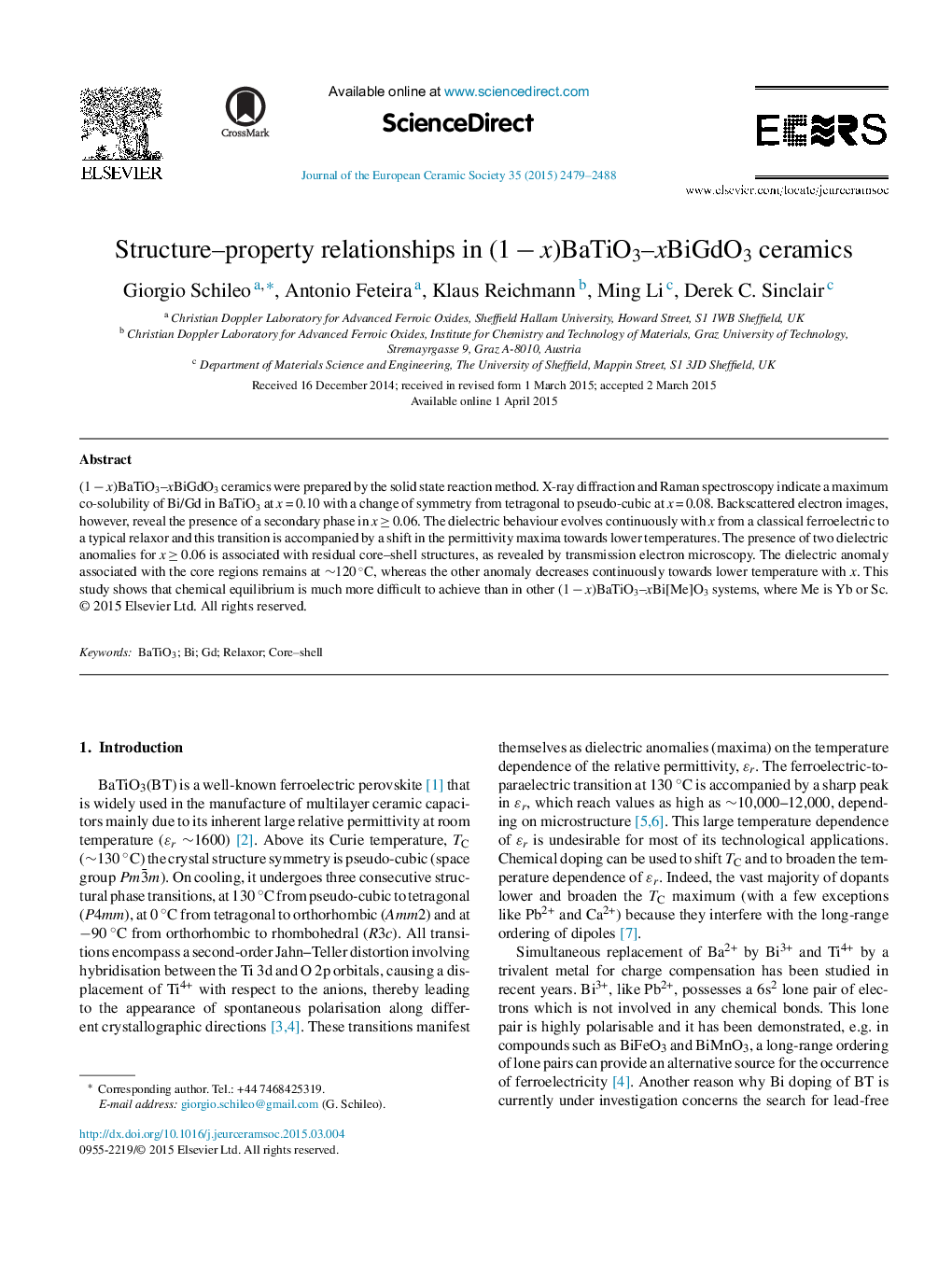| Article ID | Journal | Published Year | Pages | File Type |
|---|---|---|---|---|
| 10629462 | Journal of the European Ceramic Society | 2015 | 10 Pages |
Abstract
(1 â x)BaTiO3-xBiGdO3 ceramics were prepared by the solid state reaction method. X-ray diffraction and Raman spectroscopy indicate a maximum co-solubility of Bi/Gd in BaTiO3 at x = 0.10 with a change of symmetry from tetragonal to pseudo-cubic at x = 0.08. Backscattered electron images, however, reveal the presence of a secondary phase in x â¥Â 0.06. The dielectric behaviour evolves continuously with x from a classical ferroelectric to a typical relaxor and this transition is accompanied by a shift in the permittivity maxima towards lower temperatures. The presence of two dielectric anomalies for x â¥Â 0.06 is associated with residual core-shell structures, as revealed by transmission electron microscopy. The dielectric anomaly associated with the core regions remains at â¼120 °C, whereas the other anomaly decreases continuously towards lower temperature with x. This study shows that chemical equilibrium is much more difficult to achieve than in other (1 â x)BaTiO3-xBi[Me]O3 systems, where Me is Yb or Sc.
Keywords
Related Topics
Physical Sciences and Engineering
Materials Science
Ceramics and Composites
Authors
Giorgio Schileo, Antonio Feteira, Klaus Reichmann, Ming Li, Derek C. Sinclair,
